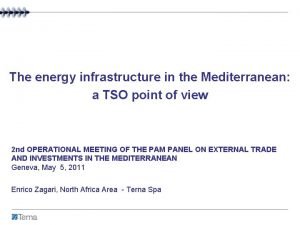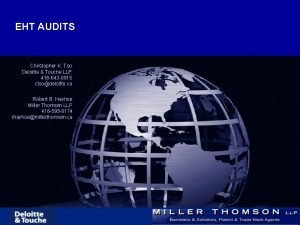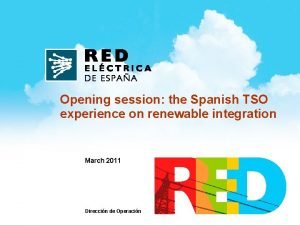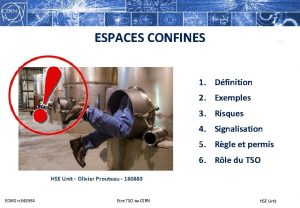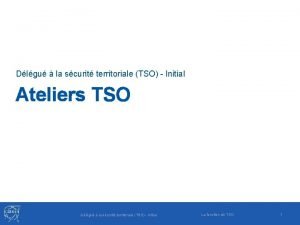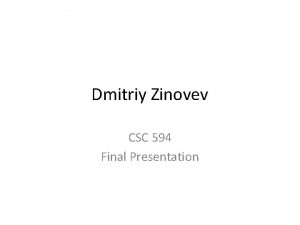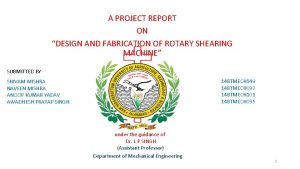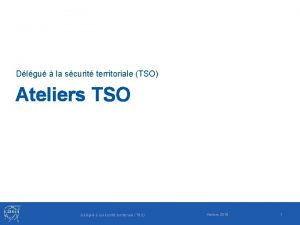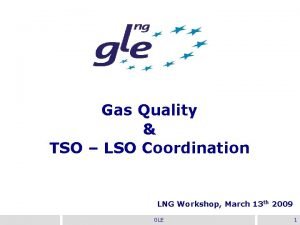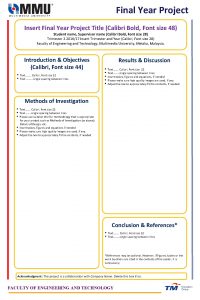TSO 2020 Project Activity 2 Final Workshop TU











- Slides: 11

TSO 2020 Project – Activity 2 Final Workshop | TU Delft, The Netherlands | December 11 th, 2019 HIL testing of electrolyser converter control for frequency support Dr. Zameer Ahmad

TSO 2020 and Scope of Activity 2: Overview of TSO 2020 Tasks by TU Delft Scope: To study the dynamic interaction between international connected electrical transmission networks and the large-scale demand side response associated to power-to-gas conversion. Recommendations for the exploitation of ancillary services Hardware-in-the-Loop (HIL) tests of a mock-up rectifier and controllers in RTDS Investigation of ancillary services provision by a 300 -MW electrolyser in Eemshaven Modelling of the Northern Netherlands electrical transmission network in RTDS (including COBRAcable) Development and validation of a 1 -MW electrolyser model in RTDS (Real-Time Digital Simulator) 2

Agenda 1) TSO 2020 and the scope of Activity 2 2) Overview of electrical ancillary services markets 3) Electrolyser model and the Veendam-Zuidwending case study 4) Northern Netherlands case study with 300 -MW electrolyser 5) Fast active power-frequency regulation by electrolysers 6) Conclusions 3

Hardware-in-the-Loop Testing Set-up Real-time target (RTT) Detailed model v(t) and f Real-time simulator (RTDS) v(t) and f Control signals DC Power v(t) and f Grid Connection 3 -Phase, 400 V, 50 Hz Device under test Measured signal Control signal Matlab or RSCAD software ELECTROLYSER AC-DC-AC Grid Emulator AC-DC Converter 4

Fast active power-frequency regulation by electrolysers: Fast Active Power-Frequency Regulation (FAPR) Proposed Method 1 Combined droop-derivative controller Proposed Method 2 Virtual Synchronous Power (VSP) controller Virtual Synchronous power (VSP) Controller 5

Fast active power-frequency regulation by electrolysers: Testing of Control Strategies on Electrolyser Converter Frequency No support from electrolyser 50 (Hz) RTT No support from electrolyser (V and f) DC Power Electrolyser AC-DC-AC Grid Emulator AC-DC Electrolyser converter 6

Fast active power-frequency regulation by electrolysers: FAPR implemented in Renewable Energy Hub 7

Fast active power-frequency regulation by electrolysers: Implementation of FAPR Solar Farm. Hub Implementationofof. FAPRinin. Multi-Energy Electrolyser VSP controller VSP Controller 8

Agenda 1) TSO 2020 and the scope of Activity 2 2) Overview of electrical ancillary services markets 3) Electrolyser model and the Veendam-Zuidwending case study 4) Northern Netherlands case study with 300 -MW electrolyser 5) Fast active power-frequency regulation by electrolysers 6) Conclusions 9

Conclusions • The proposed generic 1 -MW electrolyser model can accurately replicate the dynamic response of a real electrolyser (as observed in measurements). • Large-scale electrolyser capacity is technically promising for the procurement of ancillary services. Yet, the business model of power-to-gas will determine the market participation. • Electrolysers are a promising solution for frequency support. Activity 2 proposed methods to improve the frequency nadir and Rate-of-Change-of-Frequency. • With a ramp rate of 150 MW/s (0. 5 pu/s), simulations showed that electrolysers can effectively support frequency control. A higher ramp rate is desirable to obtain faster mitigation of frequency deviations. • Although not the case for the studied Northern Netherlands Test Network, electrolysers could improve network congestion, local voltage stability and rotor angle stability (as observed in simulations of a weaker test system). 10

Thanks! ? Questions:
